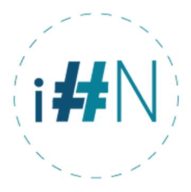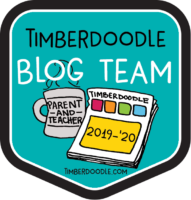This guide is published by Memoria Press and is targeted for the 3rd-4th grader. I am using it with a 5th grader. This product is suitable for both secular and Christian homeschoolers. I received a free copy of this product in exchange for an honest review.
This guide is simple, easy-to-use and well-organized.
There is a lesson for each chapter of the book. Each lesson includes the following sections.
Reading Notes
These are for you to read with your student before they read the chapter in the book. These notes go over language, people, or concepts the child may not already be familiar with. This is to increase their comprehension when they read the chapters.
A few samples from this section; calcimine - whitewash, spectacles - eyeglasses, Captain Cook - a famous explorer in the 18th century from England, this section will only take a couple of minutes but will help your child greatly in understanding the book.
Vocabulary
The vocabulary section will present a word used in the book in context, with the vocab word in bold. The students think about the meaning of the word, as it is used, and come up with a synonym for the word. They then write the synonym on the line.
The instructions at the beginning of the book note that the synonym should be a word the child is already familiar with. This is very important for the brain. Connecting the new word with a familiar word will help their brain know where to store this new information, increasing the likelihood that they remember it later.
Comprehension Questions
These questions are to be completed after the student reads the chapter. I think the suggestions in the front of the book are important to keep in mind when deciding how to complete this section. If you have a younger student many of the questions can be answered orally. An older student may be able to work independently to answer them in writing. But there are many years in-between, where you student can do more than just answer orally but cannot independently answer with a well-written sentence. It is important to guide your student through the process of how to answer these types of questions. First, your student should discuss the answer with you, then orally compose a complete sentence, and then proceed to write down the sentence with correct capitalization, punctuation, spelling, and grammar.
It is important to keep in mind how many different skills go into writing a sentence and we need to break it down to whatever level the student needs. How can you tell what they need? They need to be challenged and able to succeed. You may ask them to write complete answers to 2 or 3 questions if they still struggle with the mechanics of writing.
Don’t be afraid to help them with spelling, grammar, and punctuation. Don’t expect them to remember every concept you have taught while they are doing the hard mental work of composition. You can make note of concepts that need to be reviewed or taught in these areas.
Thinking through these answers and then being able to organize their thoughts into a complete sentence helps your student practice a great number of worthwhile skills.
For my 5th grader, we are using these questions to help develop his ability to write a legible sentence. He has the thinking and composition abilities, but his handwriting has been a wreck due to vision issues. Thankfully, his vision problems were corrected with therapy and now it is only a matter of changing habits.
Even though he is in 5th grade I still sit with him and discuss the answers and then guide him with whatever reminders he needs as he writes the sentences down. Some 5th graders will not need this level of assistance but others will. Remember, they will outgrow needing you, just be patient and let them outgrow your assistance at their own pace.
Quotations
This is simply a quote from the chapter to read and discuss with your child.
Discussion Questions
This section just has a few additional questions to talk about with your child, no writing for this section.
Enrichment
This section has a variety of suggestions and different types of assignments. Some suggestions point to further research related to the book, drawing, finding places on a map, and additional composition assignments.
This section could really be used as the backbone of a whole unit study around the book if desired. You can pick and choose activities from this section if there is more work than your student has time to complete.
In addition to those sections, there are also some specialty pages in the guide. These include pages where the student is directed to draw a scene from the book and a page near the end where they match each character in the book to a description.
What Did I Think?
Honestly, I wish I had tried one of these guides sooner. But the idea of literature guides has always made me a little squeamish. Perhaps that is only because of a lack of quality in the guides I had to slog through as a child, or maybe I just kept coming across poorly written guides. I don’t want to zap the joy out of a story with a literature guide and too many guides seemed to turn literature into a boring drill. I found that to be far from the case with this guide by Memoria Press.
This guide is written artfully to pull the child deeper into the story and give them even more joy as they are able to understand and experience the story on an even deeper level.
One reason I wanted to try the guide is that I always find it necessary to have some written accountability with boys in this general age-range. If they don’t have to somehow prove to me they read it, then they probably didn’t. From now on, guides from Memoria Press will play an important role when I need to use an accountability tool.
I will also use them whenever a book may have a larger vocabulary, as is often the case with classics, or I just know my student will love exploring the topics surrounding the book.
I think these guides effectively keep in mind all the principals of brain science I have written about on my blog.
I would even say that for an elementary-aged child you could easily use these guides along with a math curriculum to be a strong base for your homeschool curriculum. If you use all the enrichment activities your child will touch on science and history as it relates to the literature they are reading.
These guides use the power of story to get kids interested and work on the skills of reading and writing while connecting the content of science and history whenever possible.
I often say, if a curriculum is not well-organized, what are you paying for? Content is free. This guide is worth the money because it is so well-organized.
I will mention that there is a teacher’s guide that goes with this book, but I do not have the teacher’s guide, this review is strictly for the student study guide. I did not feel I needed an answer key because I am very familiar with this story.
What Did My 5th Grade Boy Think?
He has no particular comments. Like most 5th grade boys he would rather rush through ‘school’ time and run off to play. This book is good for him because it ensures me that he has actually read and understood the chapter in Mr. Popper’s Penguins and it makes him slow down enough to enjoy the story and explore surrounding ideas.


